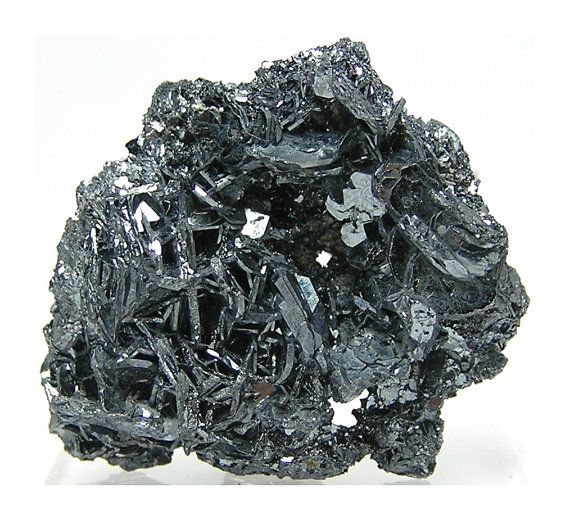The world of minerals is a fascinating one, with a myriad of colors, shapes, and properties. Among these, black minerals hold a unique allure due to their enigmatic appearance and varied characteristics. Identifying black minerals can be a challenging task, but with the right knowledge and tools, it can be an enriching experience. This article aims to provide a comprehensive guide on how to identify black minerals, delving into the intricacies of mineralogy and geology.
Understanding the Basics
Before we delve into the specifics, it's essential to understand the basics of mineral identification. Minerals are identified based on several properties, including color, streak, luster, hardness, crystal form, cleavage, fracture, and specific gravity. While color is the most obvious property, it can often be misleading, especially in the case of black minerals, which can have a variety of compositions and properties. Therefore, a combination of these properties is used for accurate identification.
Identifying Black Minerals: A Step-by-Step Guide
- Observation: Start by observing the mineral's physical characteristics. Note its color, shape, size, and texture. Black minerals can range from jet black to dark brown or gray.
- Streak Test: The streak of a mineral is the color of its powder when it is rubbed on a streak plate (a piece of unglazed porcelain). Some black minerals may leave a red, brown, or even green streak.
- Hardness Test: The hardness of a mineral is determined by the Mohs scale, which ranges from 1 (softest) to 10 (hardest). You can perform a scratch test using common objects like a fingernail, a copper penny, a glass plate, and a steel file.
- Luster Test: Luster refers to how light reflects off the mineral's surface. Black minerals can have a metallic, vitreous (glassy), or dull luster.
- Cleavage and Fracture Test: Cleavage refers to how a mineral breaks along specific planes, while fracture refers to how it breaks in an irregular manner. This can provide clues to the mineral's crystal structure.
- Specific Gravity Test: This involves comparing the weight of the mineral to the weight of an equal volume of water. It requires specialized equipment but can be very useful in identifying black minerals.
Common Black Minerals
Here are some common black minerals and their identifying properties:
- Magnetite: This is a black, magnetic mineral with a metallic luster. It has a hardness of 5.5-6.5 on the Mohs scale and leaves a black streak.
- Hematite: Hematite can be black or reddish-brown. It has a metallic or dull luster, a hardness of 5-6, and leaves a reddish-brown streak.
- Biotite: Biotite, or black mica, has a vitreous luster, a hardness of 2.5-3, and perfect cleavage in one direction.
- Obsidian: This is a black volcanic glass with a vitreous luster and a hardness of 5-5.5. It fractures in a conchoidal manner.
Conclusion
Identifying black minerals is a fascinating endeavor that combines observation, testing, and knowledge. While the process can be complex, it offers a deeper understanding of the earth's geology and the diverse world of minerals. Remember, practice and patience are key to becoming proficient in mineral identification.
About Author
You may also like
-
What Is a Semi Flexible Solar Module and Why Is It Gaining Popularity?
-
HV48100 Distributed Energy Storage System: A Smarter Way to Stabilize and Store Energy
-
How TiO2 Masterbatch Improves Color Consistency and Efficiency in Plastics Processing
-
Yukun Qiangwei Motor Unveils New Diesel Generator Set: Advantages, Applications, and Pricing
-
How Oil Type Transformers Enhance Industrial Power Efficiency

